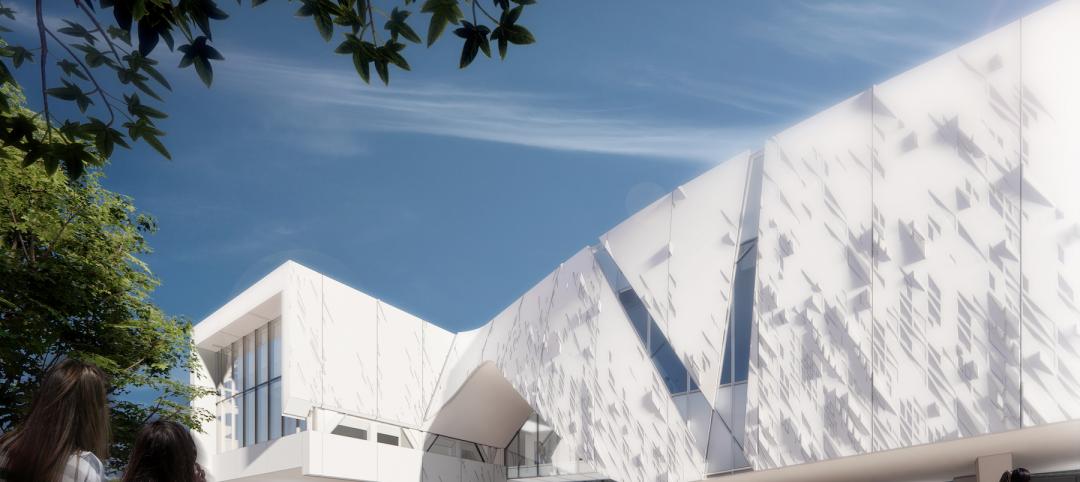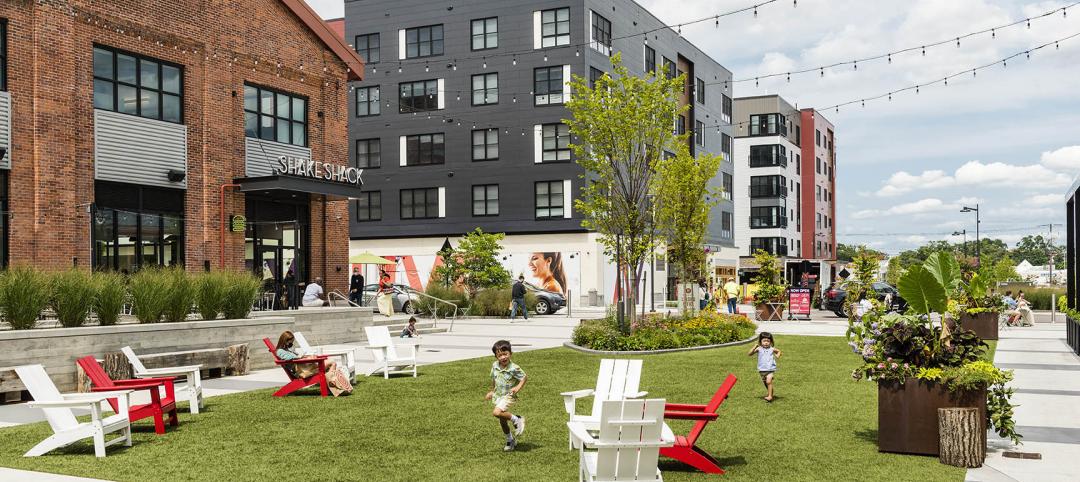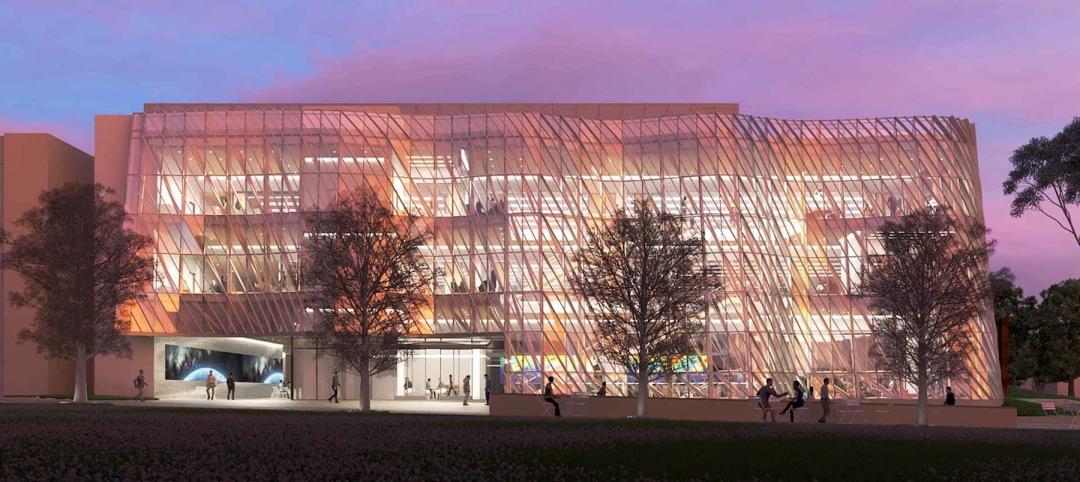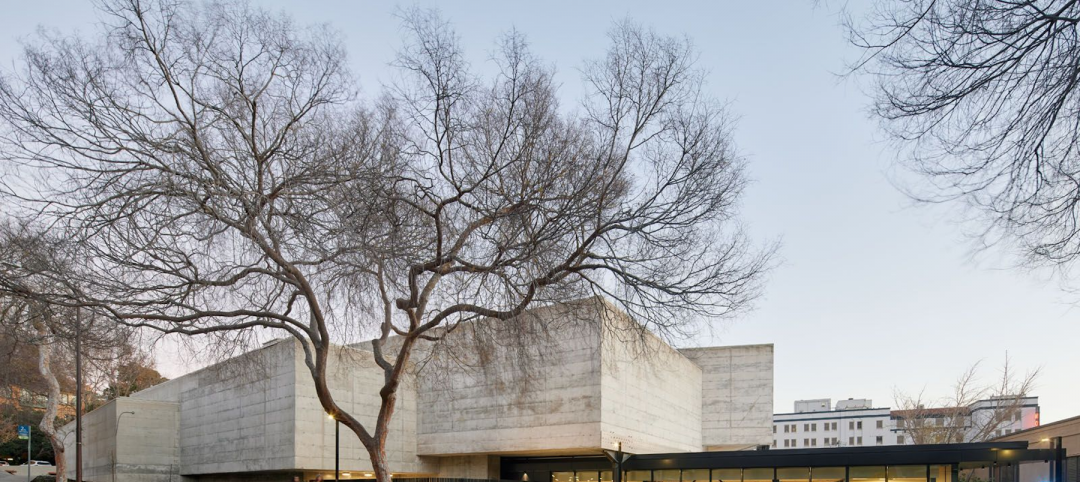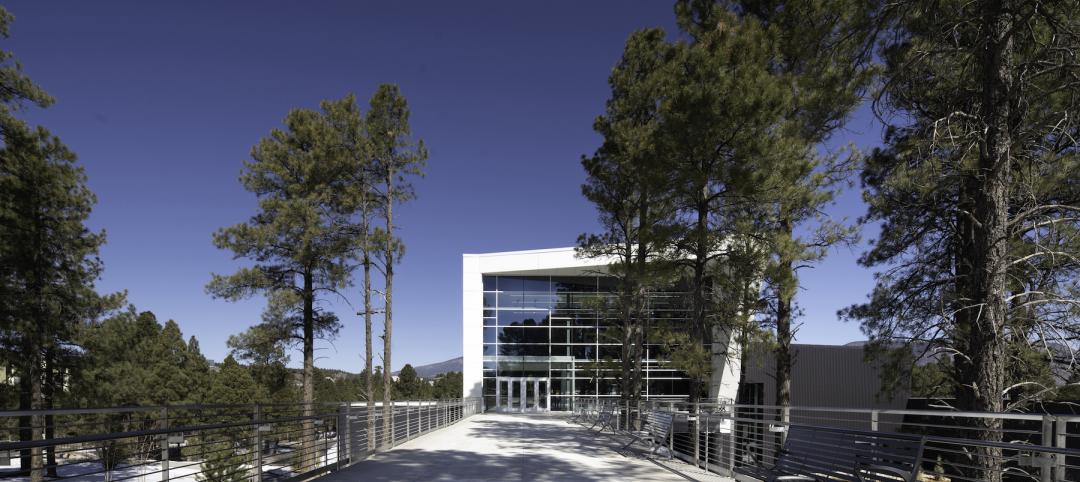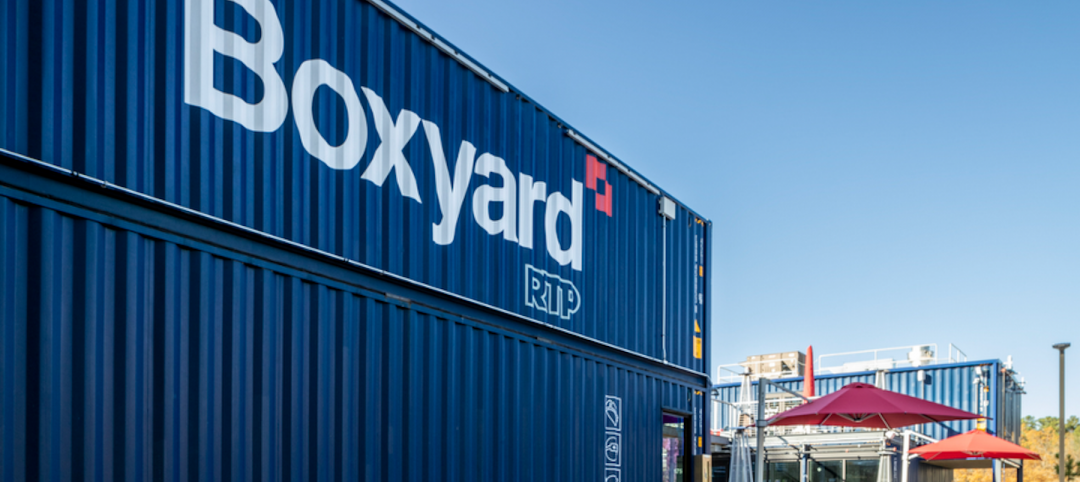Soaring to a height of 1,776 feet (540-meter), the 2.6-million-sf (242,000-square-meter) building soon to become the new One World Trade Center in the lower Manhattan district of New York City is a marvel of design and engineering. Construction of the building, previously dubbed the Freedom Tower, began in April 2006 and, when it is completed in 2013, it will be the tallest building in the U.S.
The building will feature an expansive public lobby, a series of mechanical floors, followed by 69 office floors that will include two television broadcast floors, mechanical floors and two restaurants. There will be an observation deck and parapet above these floors, and at the crown, a communications platform and a 408-foot (125-meter), cable-stayed antenna. Below-ground, concourses will offer 55,000-sf (5,100 square-meters) of retail space.
Sustainable design is central to One World Trade Center's development, integrating renewable energy, interior daylighting, reuse of rainwater and of recycled construction debris and materials. But one of the most sustainable elements of the structure is so integral to the mammoth skyscraper’s strength and durability that it might surprise you.
Concrete
The structural columns of One World Trade Center are comprised of steel and concrete. The compressive strength of concrete for these columns is divided into four phases starting at 14,000 psi (97 MPa) at the bottom of the building, and progressing through 12,000 psi (83 MPa), 10,000 psi (69 MPa) and 8,600 psi (59 MPa) to the top. The 12,000 psi (83 MPa) concrete phase of the project was extremely challenging, with the engineers, owners and contractors all having their own requirements and specifications.
Engineering requirements:
- Compressive strength: 12,000 psi (83 MPa) @ 56 days
- Over-design for safety: 1,900 psi (13 MPa)
- Modulus of elasticity: 7.0 million psi (48 GPa)
- Heat of hydration: Not to exceed 160 OF (70 OC)
- Non-air-entrained
Port Authority of New York/New Jersey:
- Quantity of portland cement in the mixture: Less than 400 lb/yd3 (240 kg/m3)
Contractor requirements:
- Slump flow: 22 – 26 inches (560 - 660 mm)
- Ability to pump to at least 40 floors
- No loss in concrete workability during transit and placement
- Aesthetically pleasing
To achieve the desired concrete properties, concrete producer Eastern Concrete Materials, Elmwood Park, N.J. and admixture supplier BASF Construction Chemicals, Beachwood, Ohio, partnered to develop a special high-strength, sustainable concrete mixture. This mixture was used for the 38,000 yd3 (29,000 m3) of concrete needed for the columns through the first 40 floors.
One of the biggest challenges in developing this concrete mixture was meeting the Port Authority of New York/New Jersey’s strict requirement for the replacement of cement. Through BASF’s Green Sense Concrete mixture optimization service, Eastern Concrete Materials was able to proportion a concrete mixture that met this requirement and allowed for the use of high levels of recycled materials. The mixture substantially replaced portland cement with the recycled materials, as well as silica fume, non-cementitious fillers and Glenium high-range water-reducing admixtures to exceed all the performance targets specified by the One World Trade Center project stakeholders.
To determine the environmental impact, an Eco-Efficiency Analysis of the concrete mixture was conducted, using a methodology validated by NSF International, to compare the specialized Green Sense Concrete mixture to a reference mixture. The results of this cradle-to-gate analyses included fresh water savings of 30,492 gallons (115,400 liters), energy savings of over 8 million kWh, air emissions savings of 12 million lb (5445 tonnes) of CO2, solid emissions savings of over 400,000 lb (180 tonnes) and fossil fuel savings of 750,000 lb (340 tonnes).
“We are extremely proud to be part of this historic and iconic project,” said John Salvatore, Head of BASF Construction Chemicals Americas. “But we are especially proud of the collaboration and innovation that was brought to bear in order to make a significant contribution to the enhanced sustainability of One World Trade Center.”
For more on innovative admixtures, click here to visit BASF Admixture Systems. +
Related Stories
Museums | May 31, 2022
University of Texas at Dallas breaks ground on new 12-acre cultural district
The University of Texas at Dallas (UT Dallas) recently broke ground on the Crow Museum of Asian Art, the first phase of a new 12-acre cultural district on campus.
BAS and Security | May 26, 2022
Can your intelligent building outsmart hackers?
ESD's security services studio leader Coleman Wolf offers tips, advice, and lessons for protecting real estate assets from cyberattacks.
Sports and Recreational Facilities | May 26, 2022
WNBA practice facility will offer training opportunities for female athletes and youth
The Seattle Storm’s Center for Basketball Performance will feature amenities for community youth, including basketball courts, a nutrition center, and strength and conditioning training spaces.
Multifamily Housing | May 25, 2022
9 noteworthy multifamily developments to debut in 2022
A 1980s-era shopping mall turned mixed-use housing and a mid-rise multifamily tower with unusual rowhomes highlight the innovative multifamily developments to debut recently.
Coronavirus | May 20, 2022
Center for Green Schools says U.S. schools need more support to fight COVID-19
The Center for Green Schools at the U.S. Green Building Council released a new report detailing how school districts around the country have managed air quality within their buildings during the second year of the COVID-19 pandemic.
Regulations | May 20, 2022
Biden’s Clean Air in Buildings Challenge aims to reduce COVID-19 spread
The Biden Administration recently launched the Clean Air in Buildings Challenge that calls on all building owners and operators, schools, colleges and universities, and organizations to adopt strategies to improve indoor air quality in their buildings and reduce the spread of COVID-19.
Building Team | May 20, 2022
Caltech breaks ground on a new center to study climate and sustainability
The California Institute of Technology (Caltech) recently broke ground on its Resnick Sustainability Resource Center.
Laboratories | May 20, 2022
Brutalist former Berkeley Art Museum transformed into modern life science lab
After extensive renovation and an addition, the former Berkeley Art Museum and Pacific Film Archive at the University of California, Berkeley campus reopened in May 2022 as a modern life science lab building.
Sports and Recreational Facilities | May 19, 2022
Northern Arizona University opens a new training center for its student athletes
In Flagstaff, Ariz. Northern Arizona University (NAU) has opened its new Student-Athlete High Performance Center.
Energy-Efficient Design | May 19, 2022
Shipping containers used to build Research Triangle Park’s first community gathering space
Shipping containers were the prominent building material used to construct Boxyard RTP, the first public community and gathering place in North Carolina’s Research Triangle Park (RTP).


